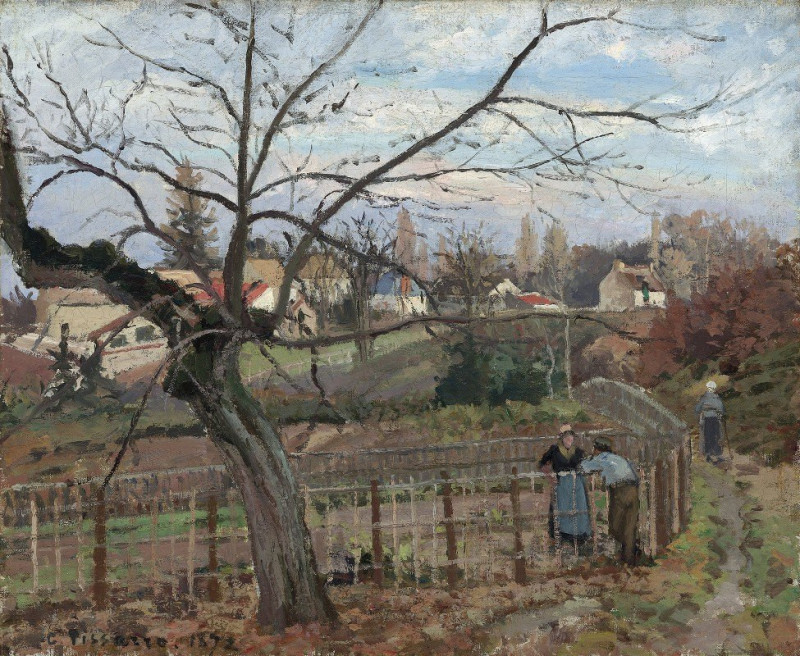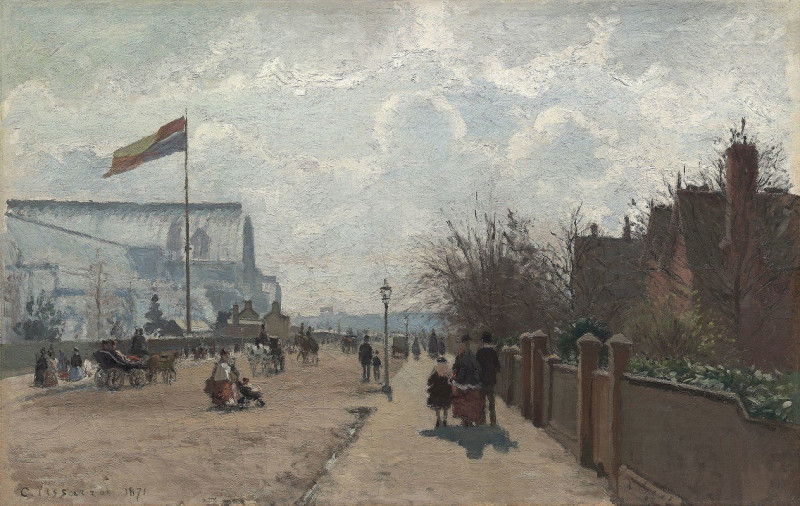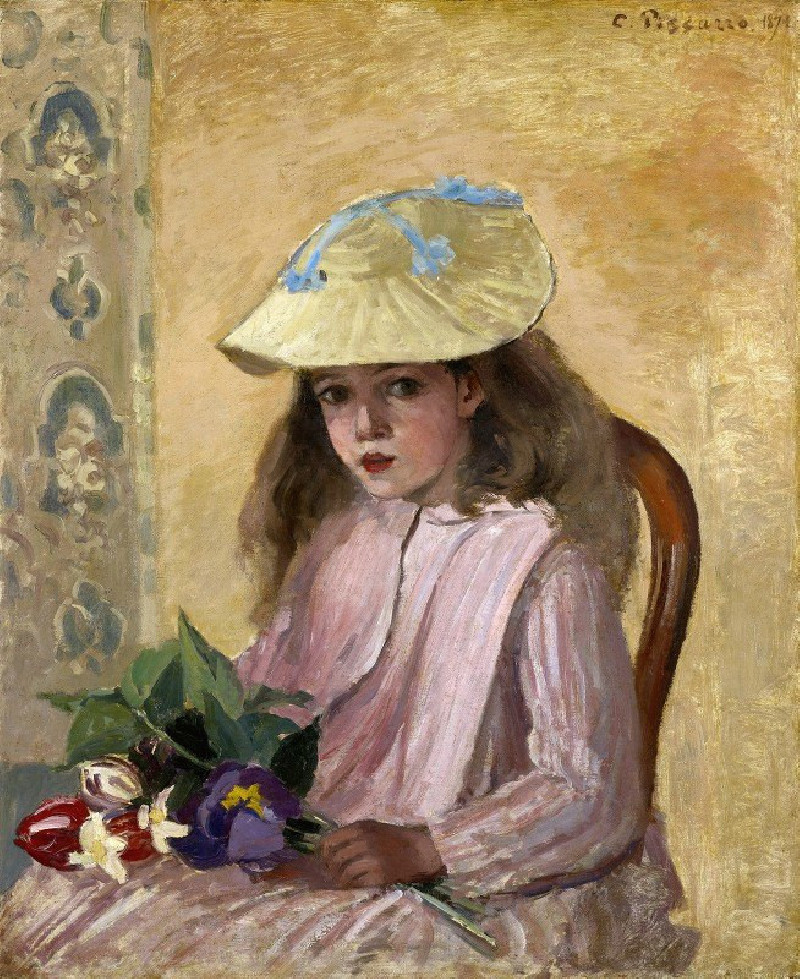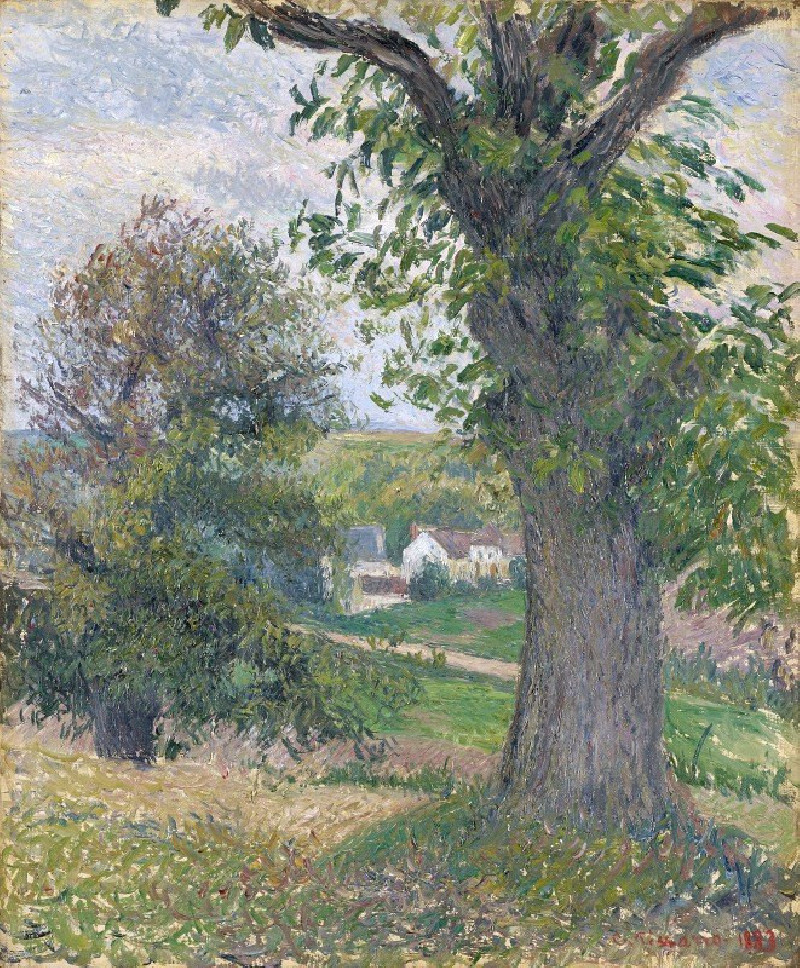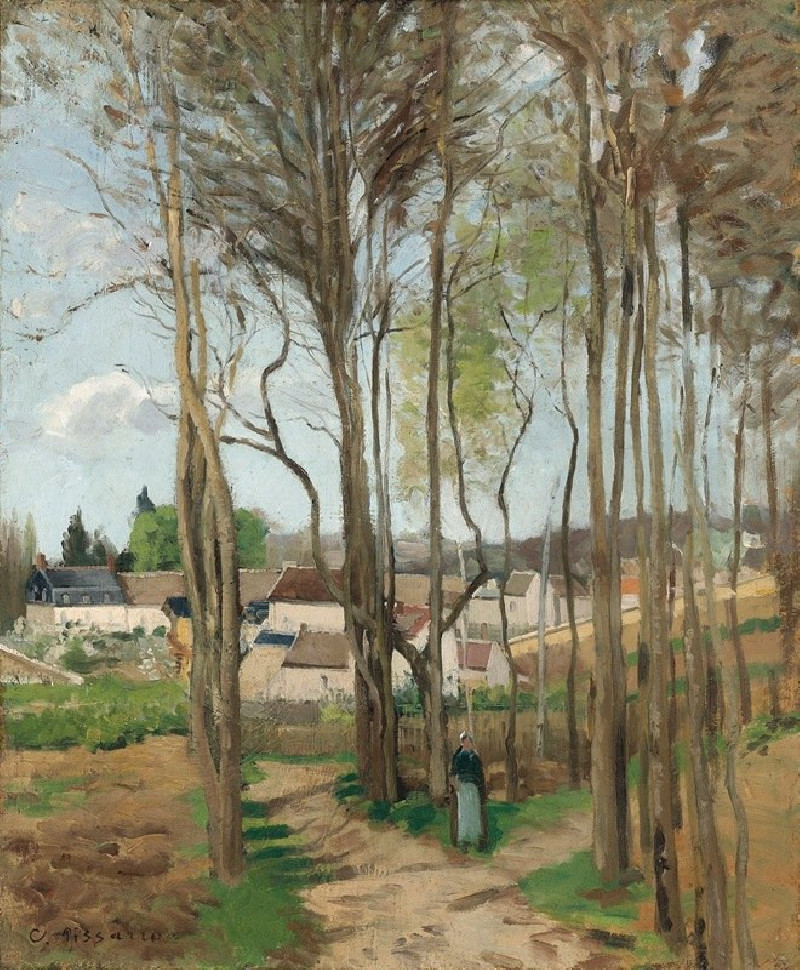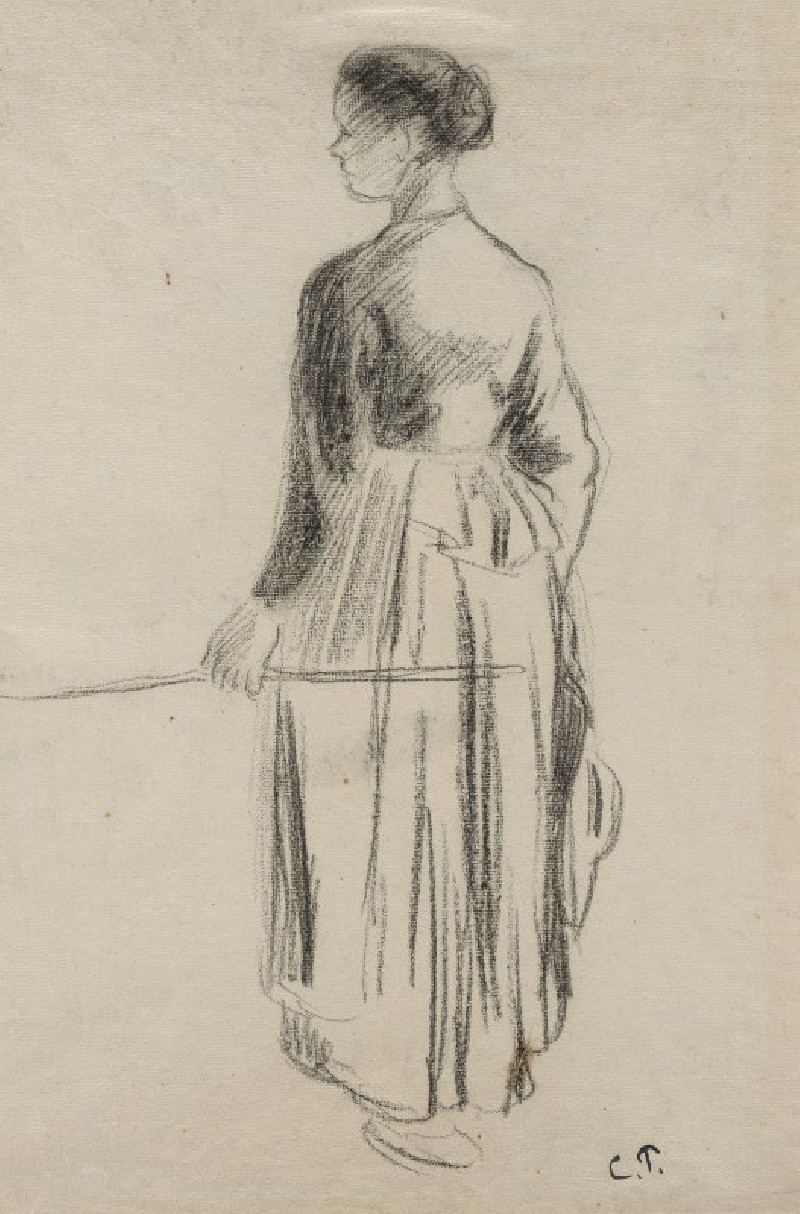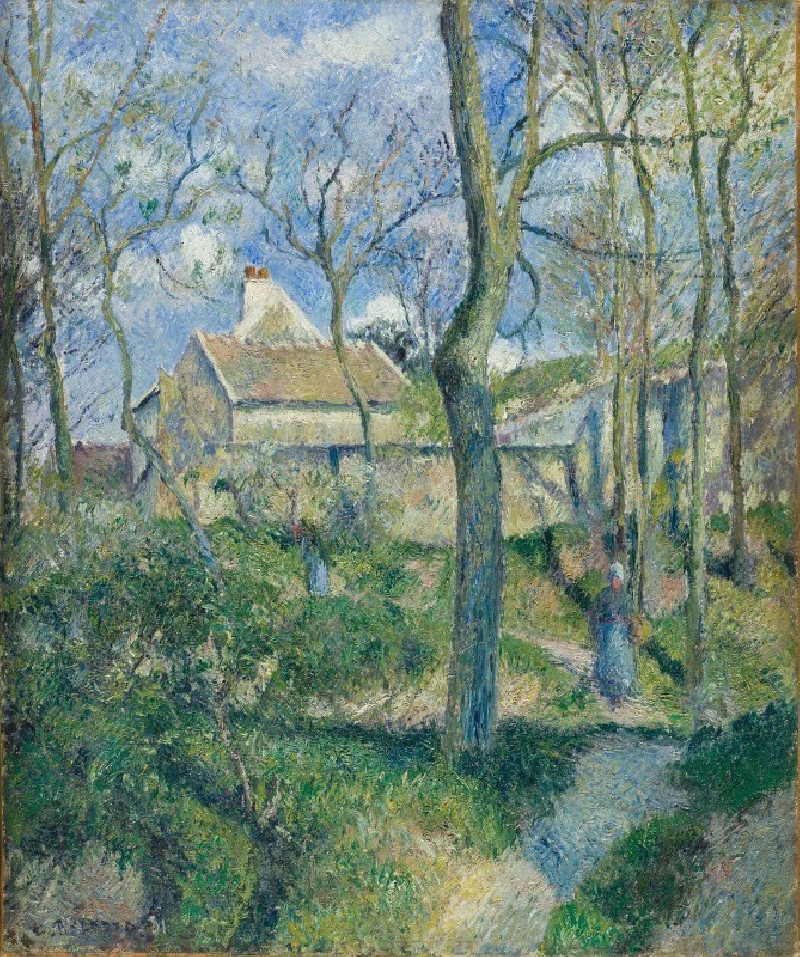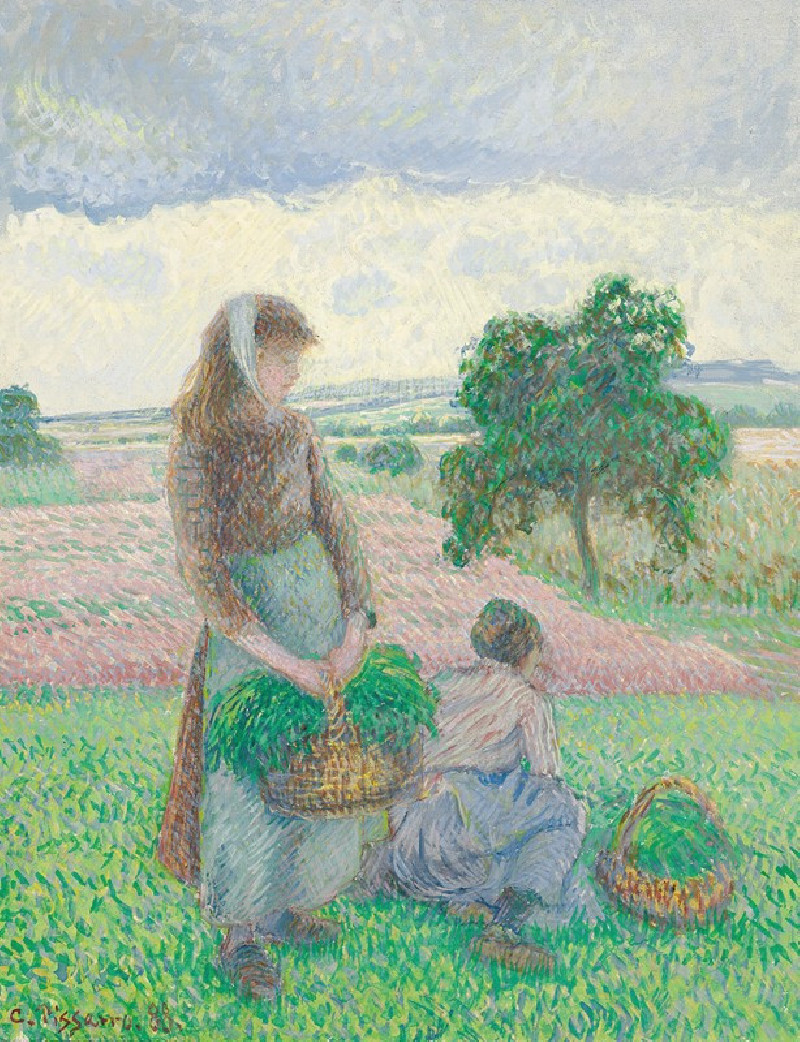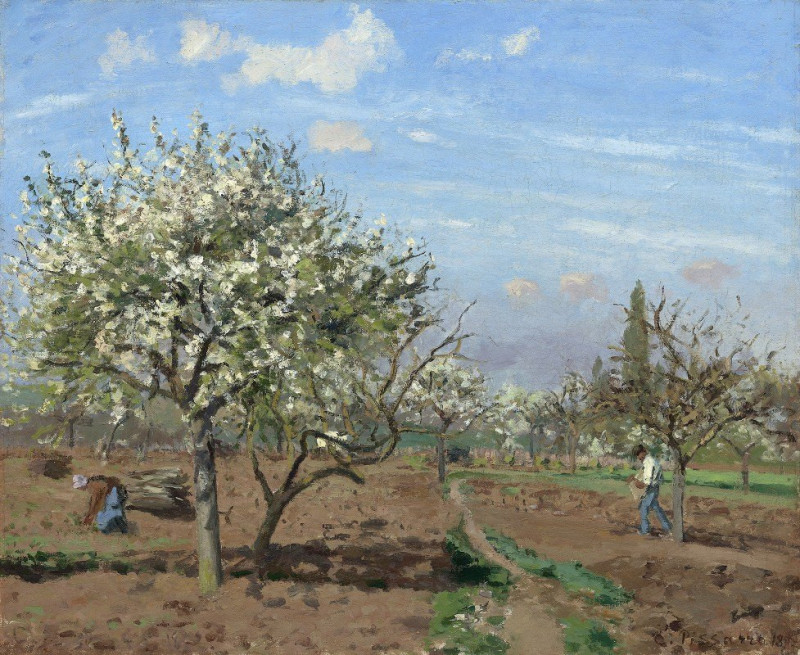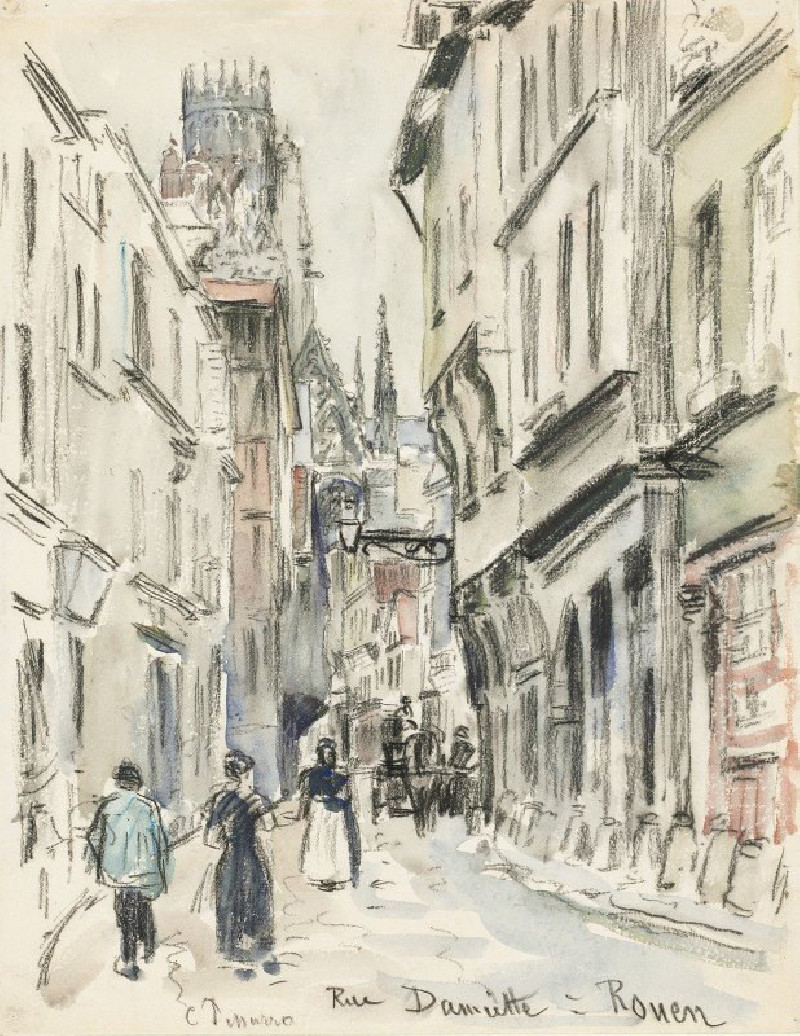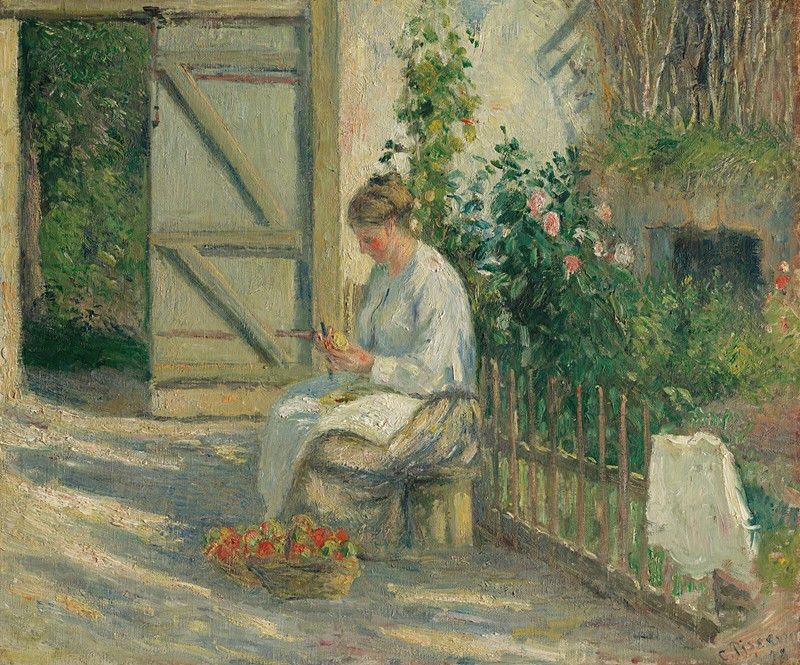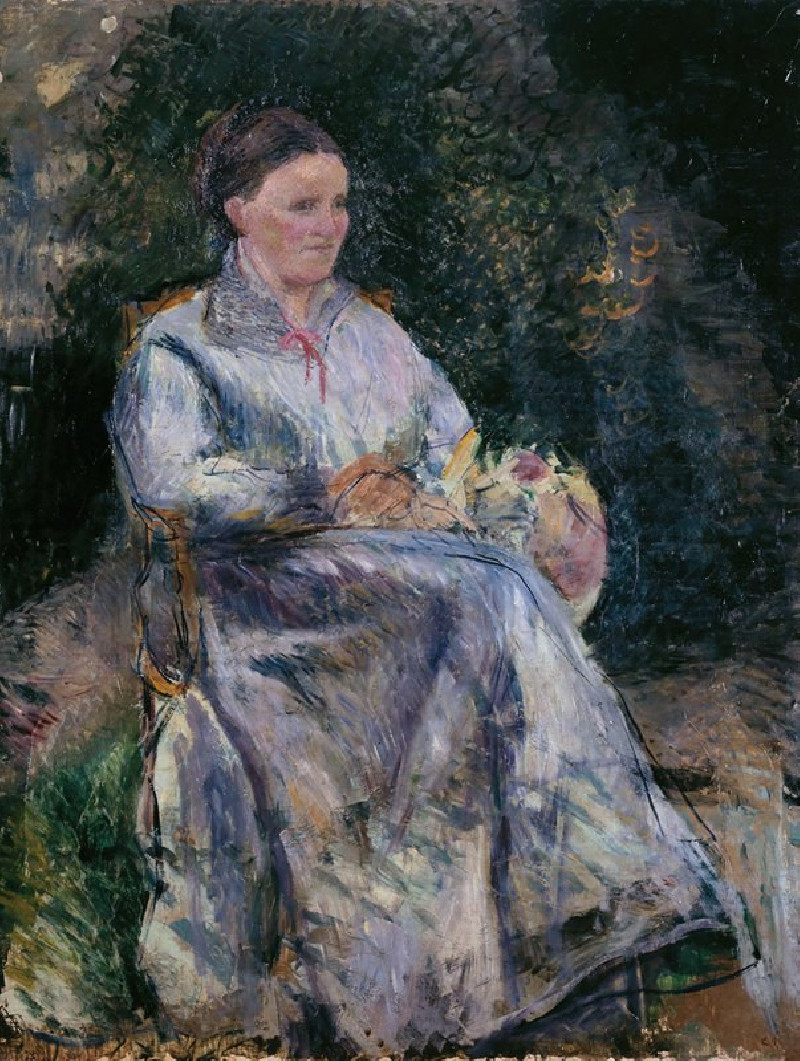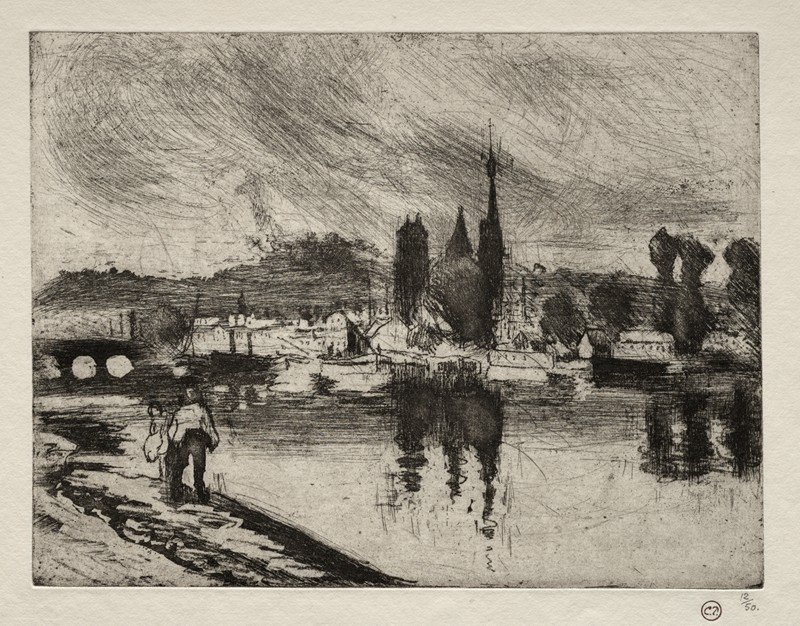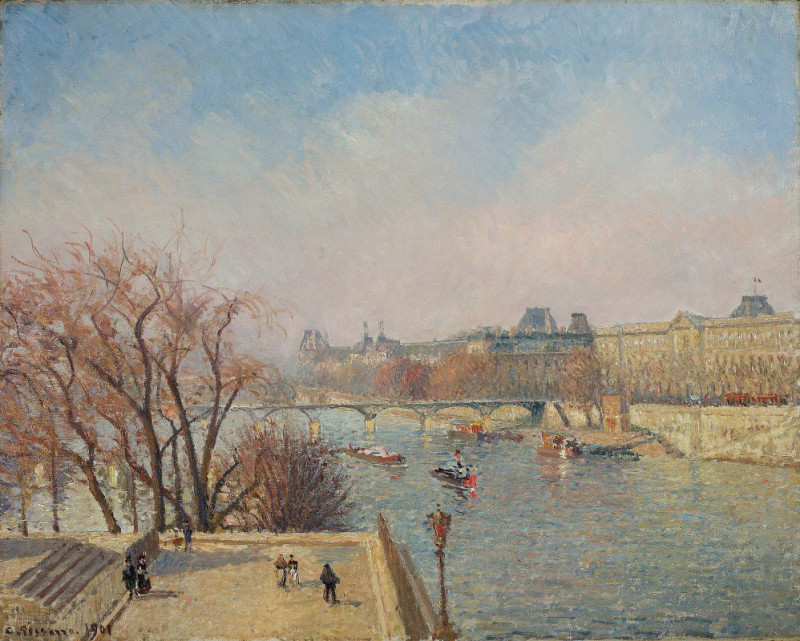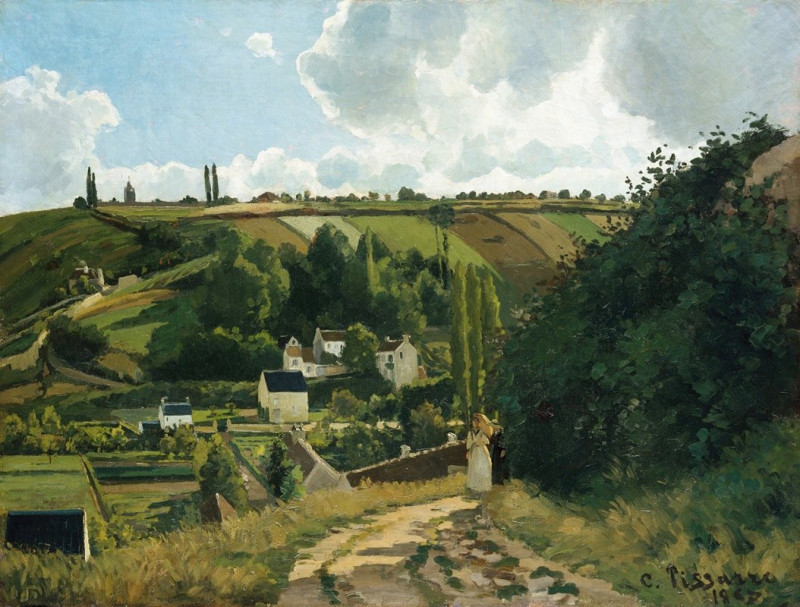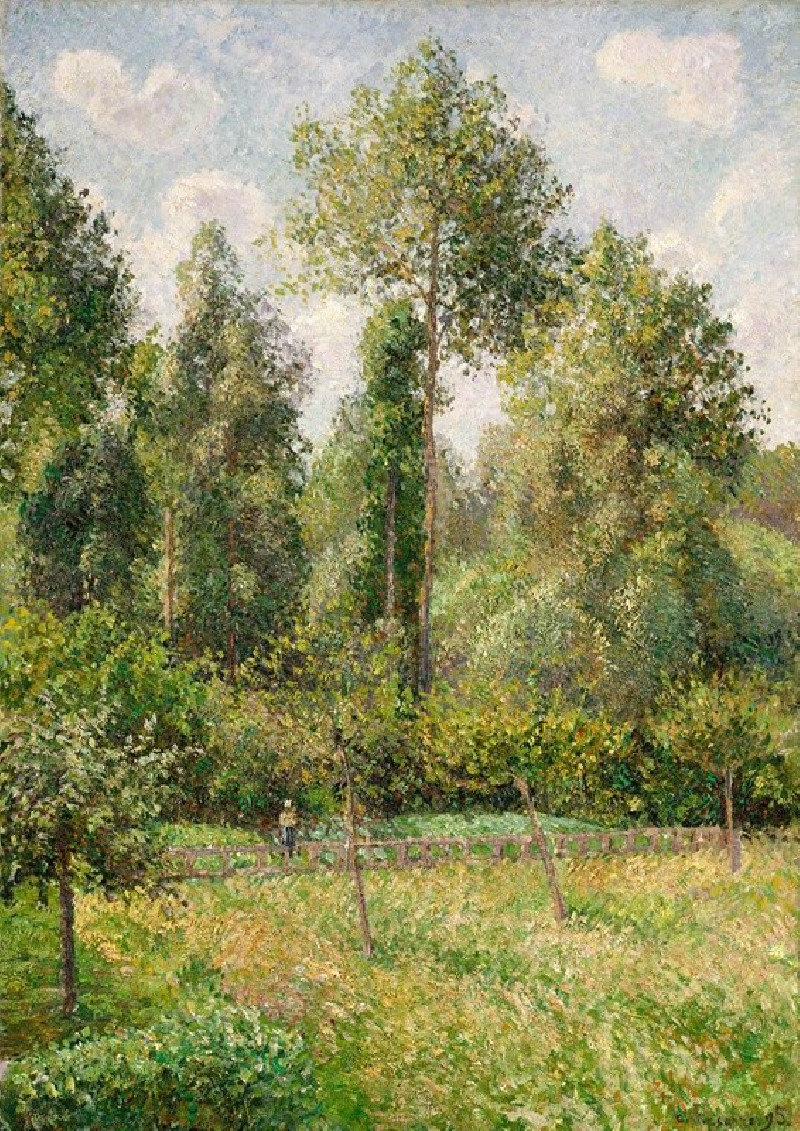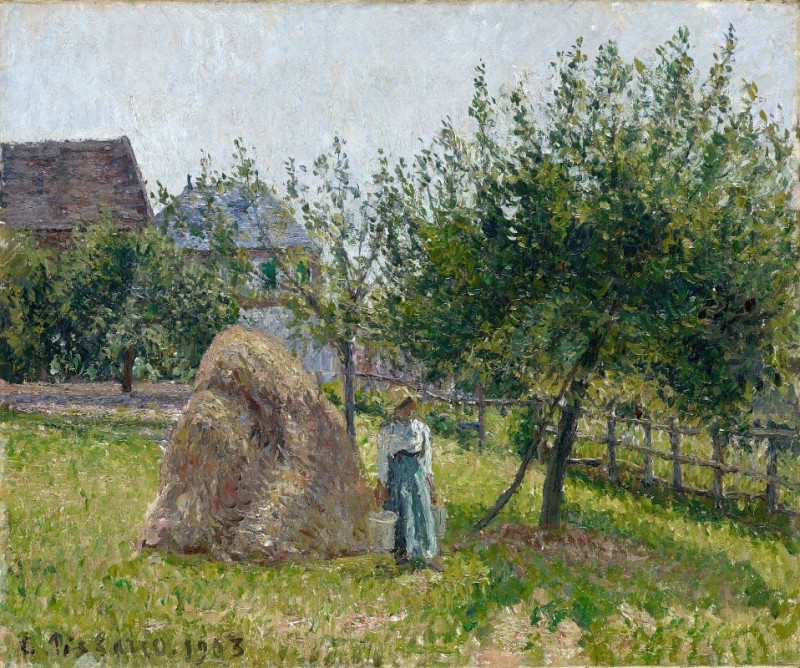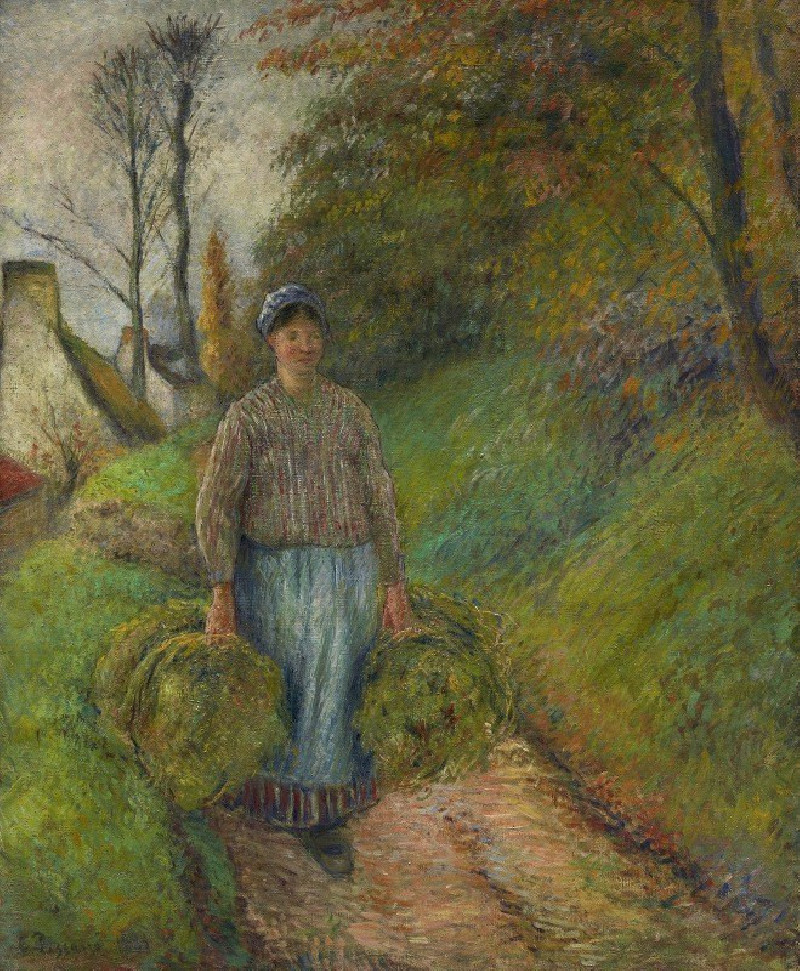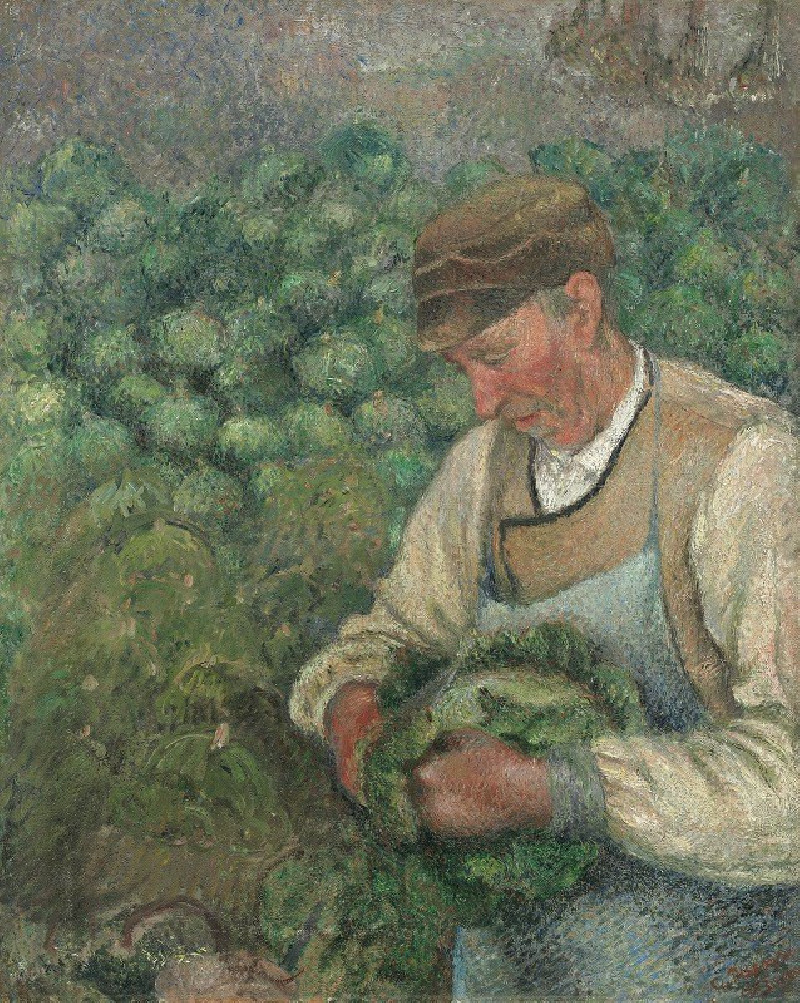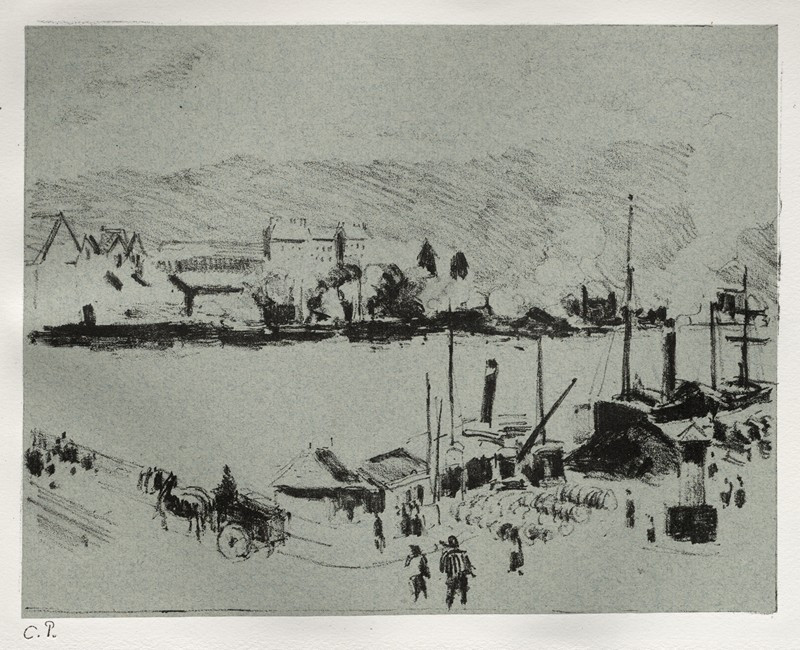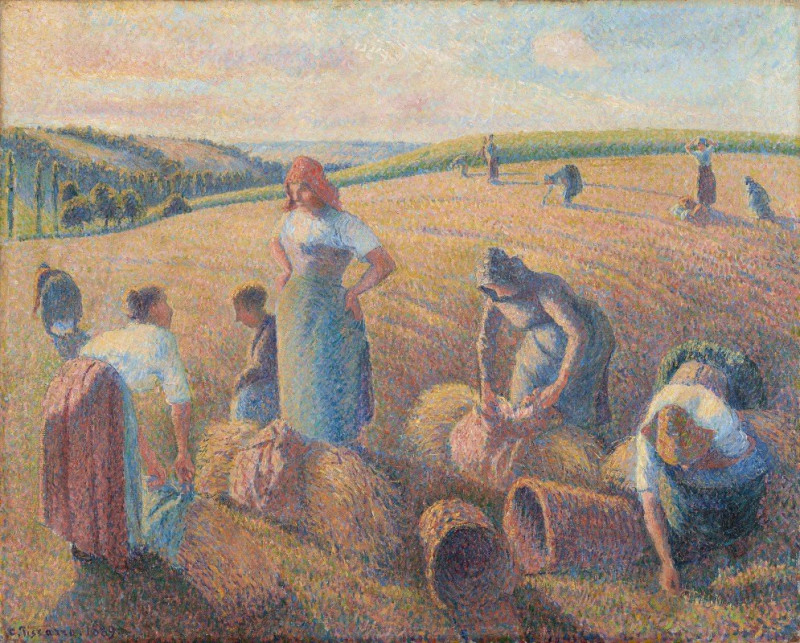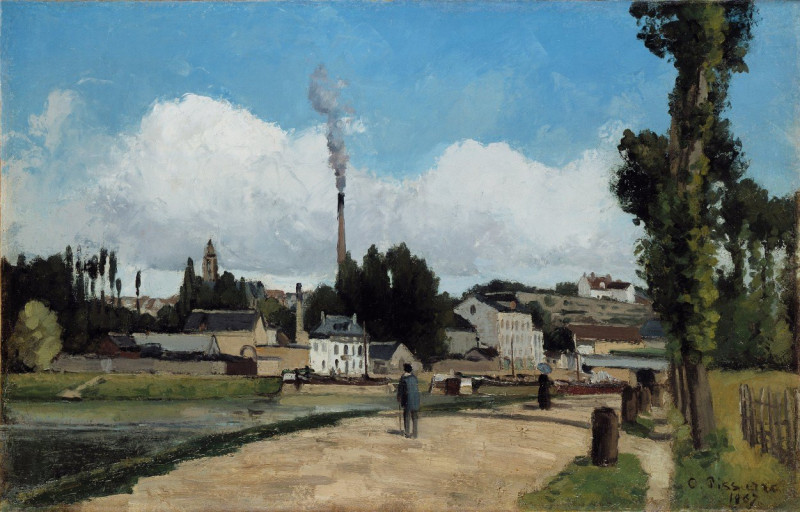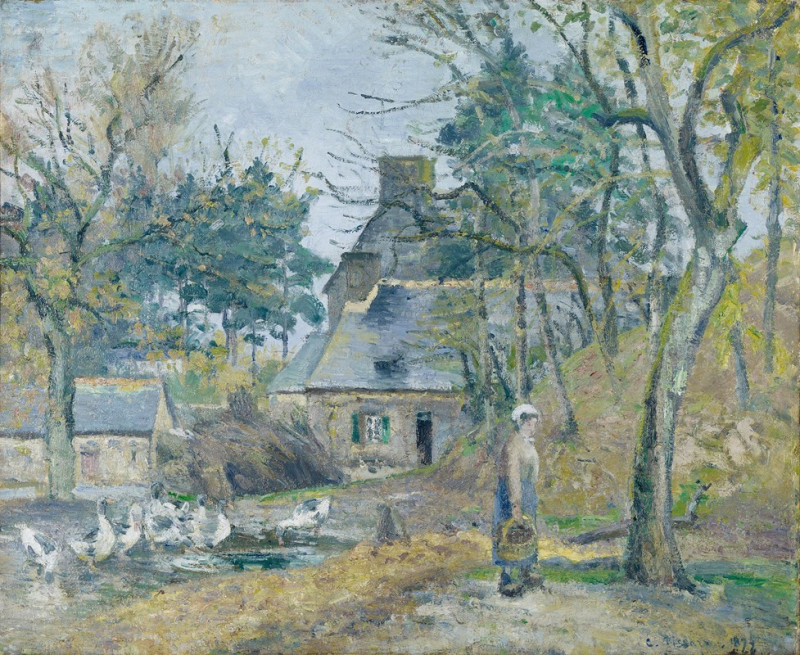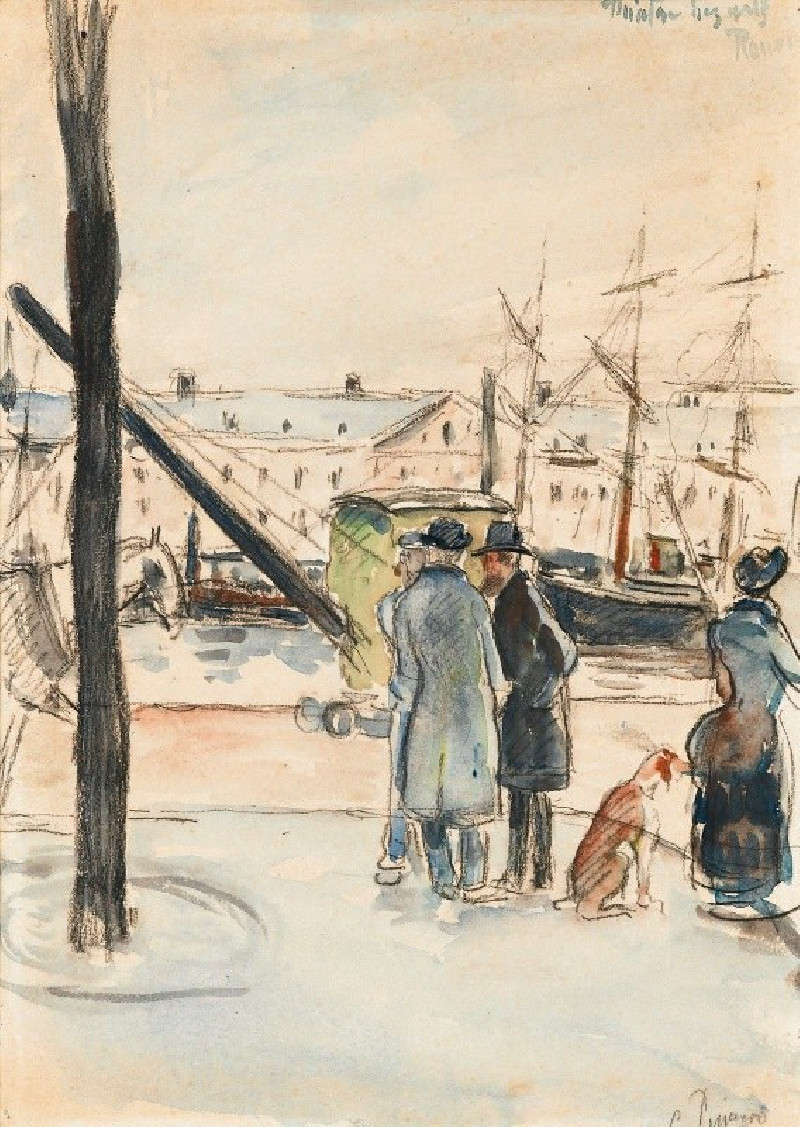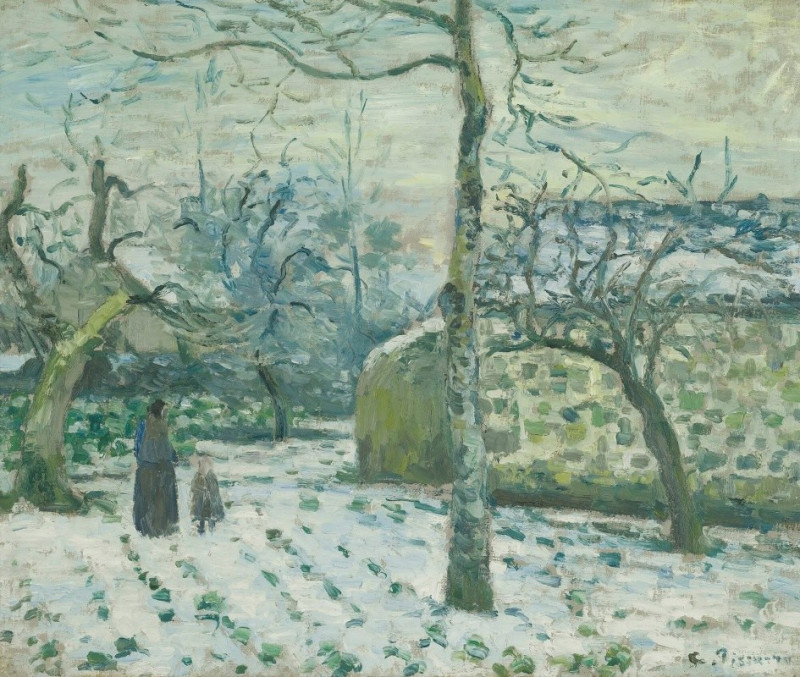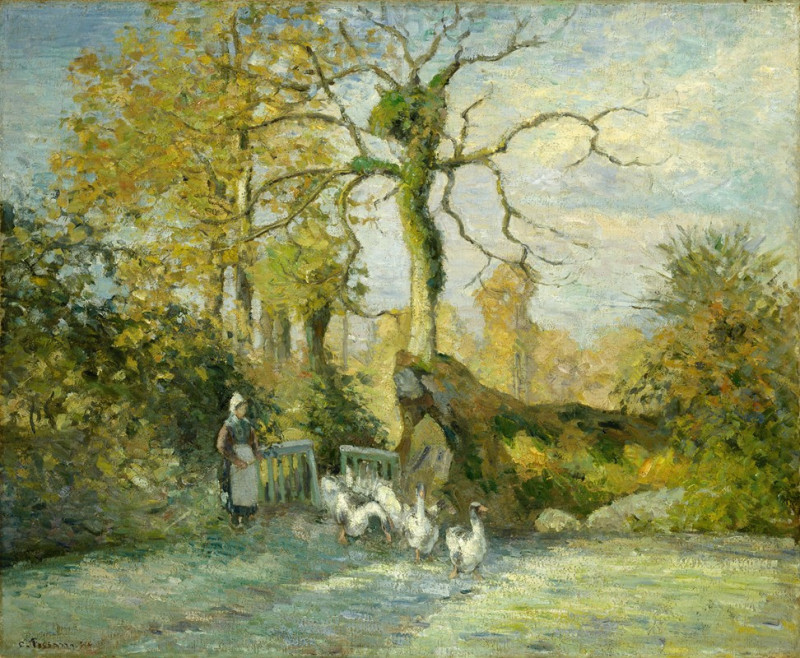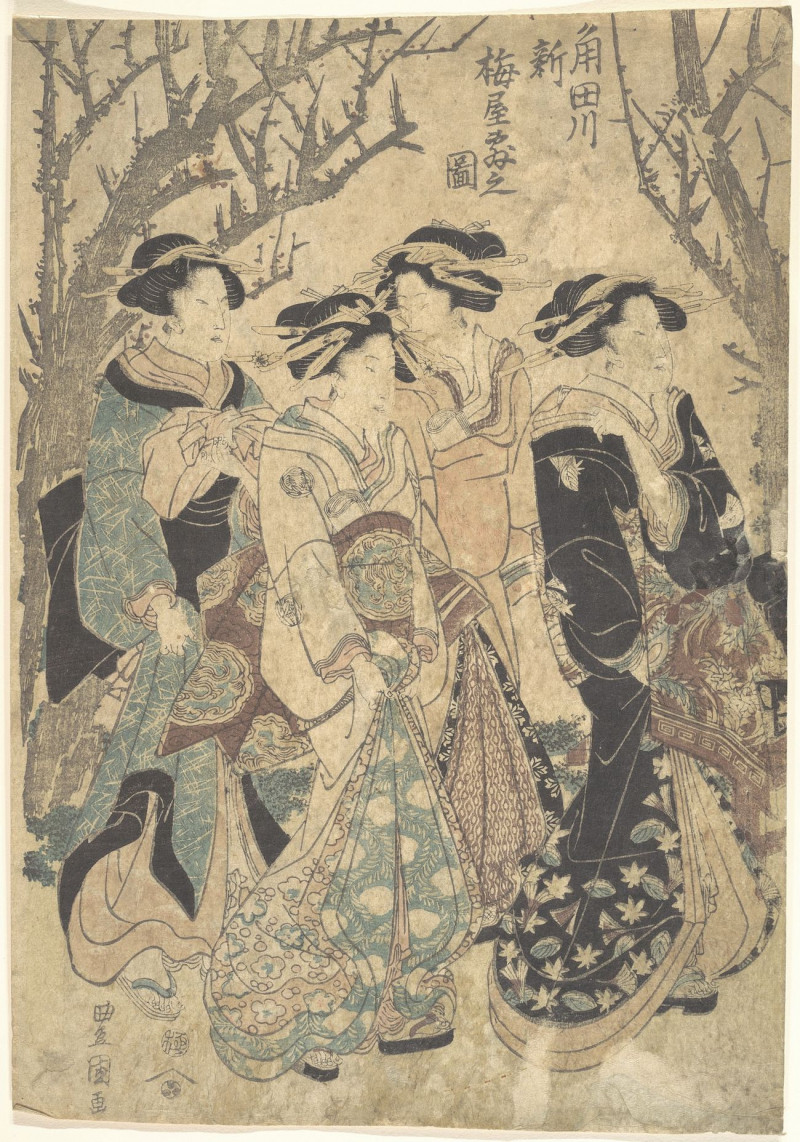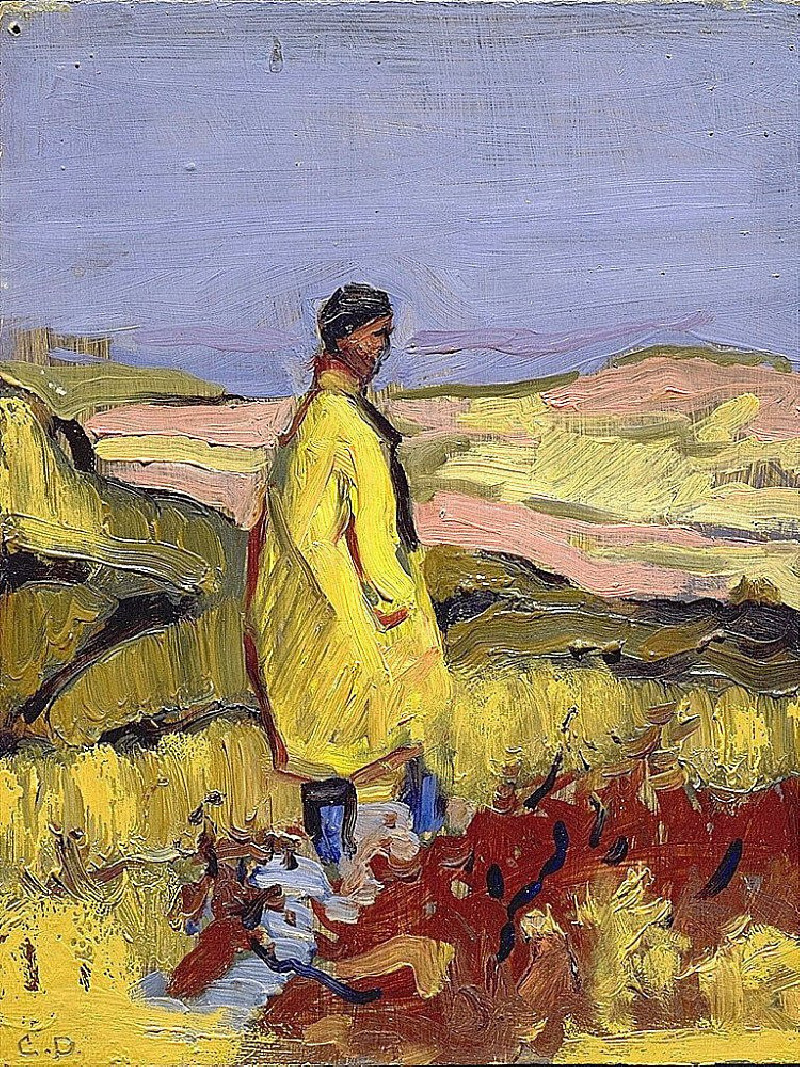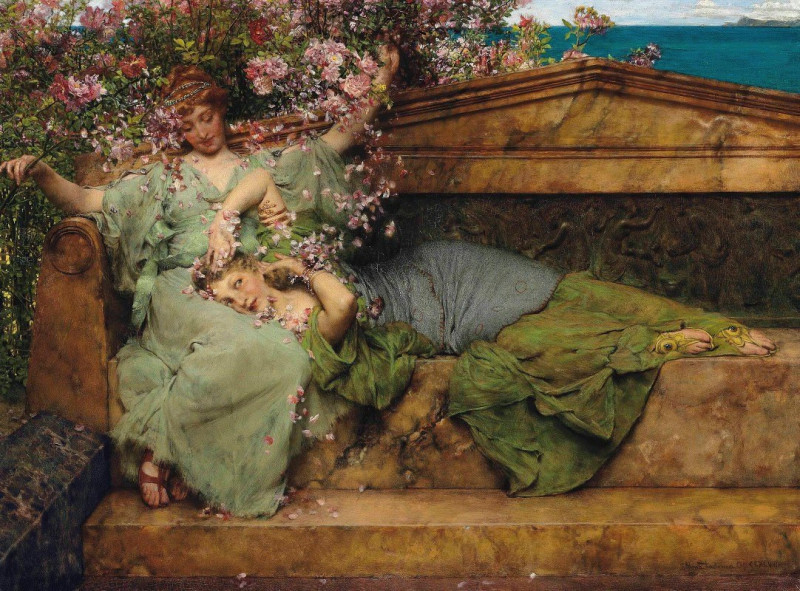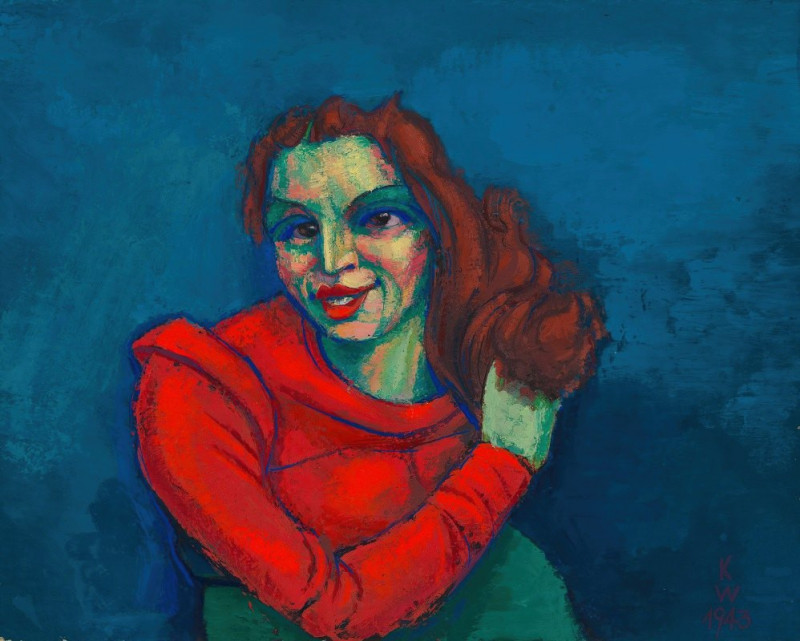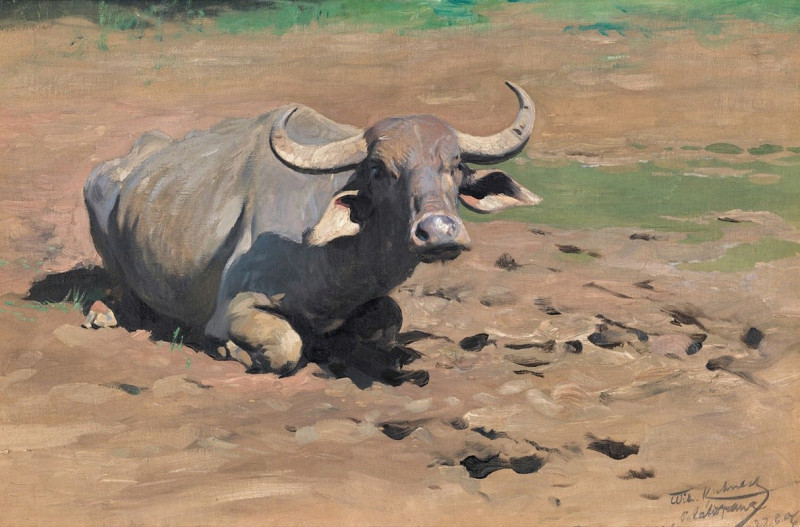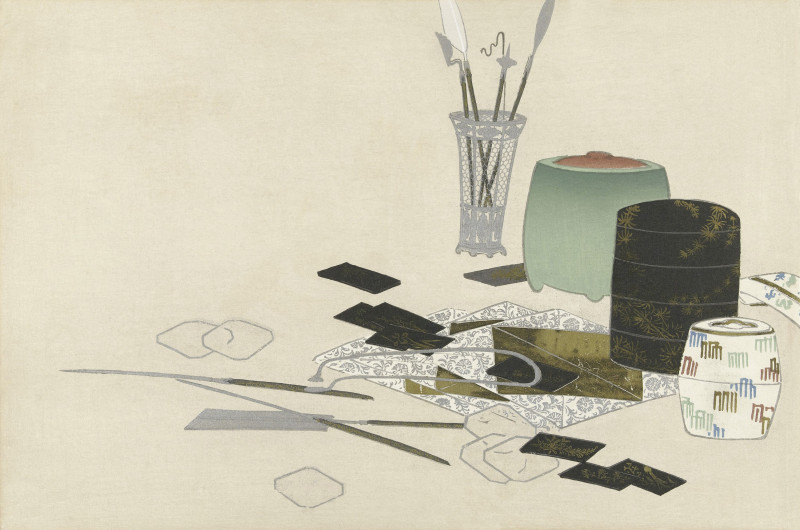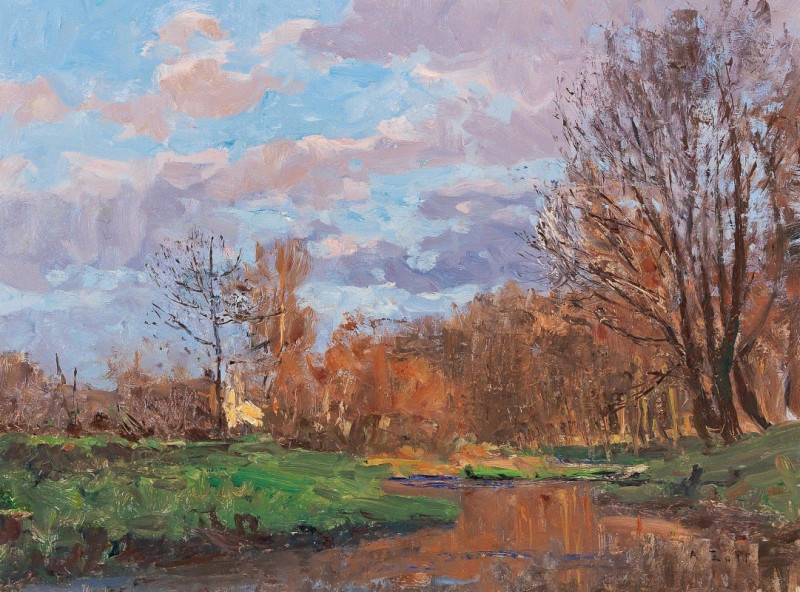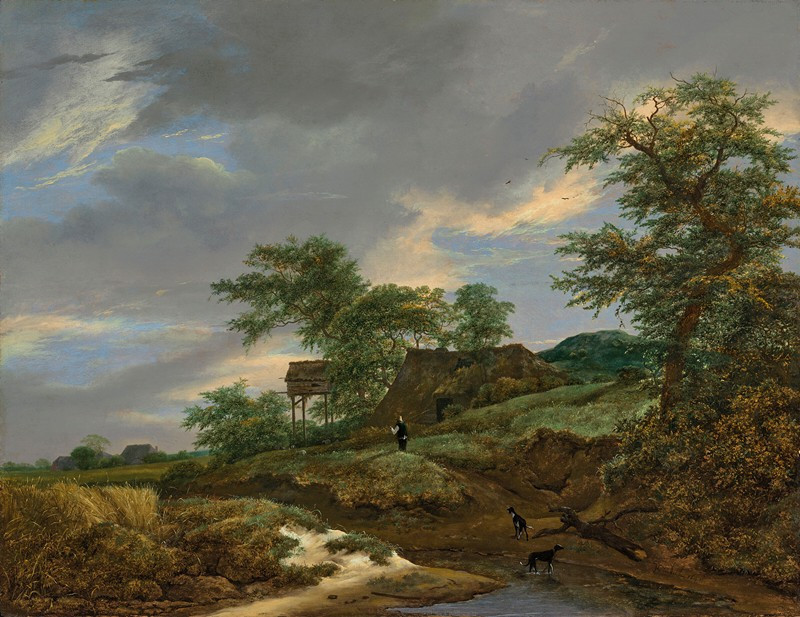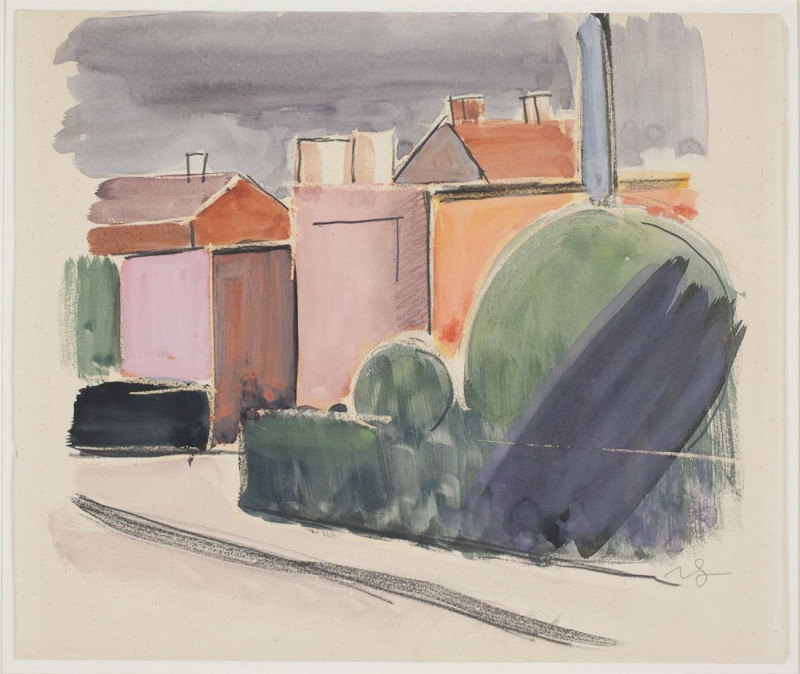The Fence (1872)
Technique: Giclée quality print
Recommended by our customers
More about this artwork
In "The Fence," a masterpiece painted in 1872 by Camille Pissarro, viewers are offered a glimpse into the tranquil rural life that inspired so much of Pissarro's oeuvre. This painting evocatively captures the essence of a countryside landscape, where the simplicity of everyday life is rendered with poetic grace.The scene unfolds beneath an overcast sky, with leafless branches whimsically stretching across the frame, suggesting the chill of late autumn or early winter. Dominating the foreground is a weathered fence, perhaps a boundary for the small garden where two figures are busy at work. These figures, clad in traditional attire, are absorbed in their tasks near the fence, bringing a human element to the serene landscape.In the background, the village emerges with its cozy homes adorned with red roofs, nestled amid bare trees and lush greens that suggest the fading colors of fall. A path meanders through the middle ground, inviting the viewer's eye to wander through the composition and explore the details of this rustic setting.
Delivery
Returns
Blessed are they who see beautiful things in humble places where other people see nothing. — Camille Pissarro
Camille Pissarro (1830-1903) was born on St.Thomas (now the US Virgin Islands) to a Portuguese father and a Dominican mother. He went to Paris to study art at Ecole des Beaux-Arts. He was an early pioneer of pointillism and neo-impressionism and later became a mentor of many famous impressionist painters including Cezanne, Manet, Renoir, and Gauguin. His paintings depicted rural and urban French landscapes and lifestyle. Many of his works politically captured images of peasants and laborers. Today, he is considered the father of impressionism.

